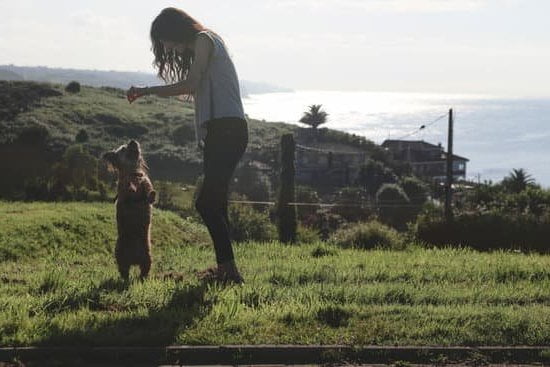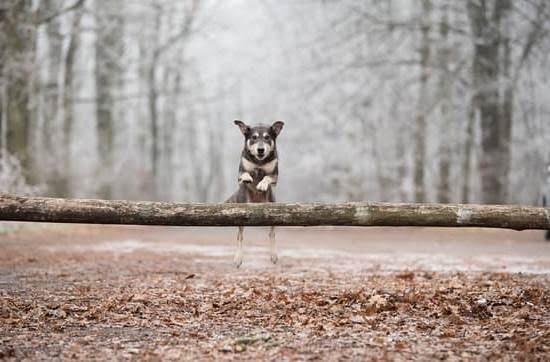Are you wondering how old should dogs be potty trained? Potty training is an essential aspect of ensuring a happy and healthy relationship between you and your furry friend.
Understanding the importance of potty training for dogs is crucial in setting the foundation for a well-behaved pet. In this article, we will explore the right age for potty training, signs that your dog is ready for potty training, effective potty training methods, common mistakes to avoid, consistency in training, dealing with accidents, and the role of patience and positive reinforcement.
Potty training your dog is not only about preventing accidents inside the house but also about establishing good habits that contribute to their overall well-being. It requires patience, consistency, and understanding of your dog’s behavior. By knowing when and how to start the potty training process, you can set your dog up for success in learning this important skill.
In the following sections, we will delve into detail on each aspect of potty training to provide you with a comprehensive guide on successfully potty training your dog. From recognizing when your puppy is ready for training to dealing with setbacks and accidents along the way, we’ll cover all the necessary information to help you navigate through this process with confidence.
So let’s get started on understanding the importance of potty training and how to achieve success in this essential aspect of dog ownership.
The Right Age for Potty Training
Potty training is an essential part of raising a well-behaved and hygienic dog. However, many pet owners may wonder: How old should dogs be potty trained? It’s important to understand that the right age for potty training your puppy can make a significant difference in the success of the training process.
Early Start
When it comes to potty training your puppy, starting early is key. The ideal age to begin potty training is between 12 and 16 weeks old. Puppies at this age are more receptive to learning and are better able to control their bladder and bowel movements. Starting the potty training process at this stage can help establish good habits early on, making it easier for your puppy to grasp the concept of where they should go to relieve themselves.
Physical Development
In addition to considering your puppy’s age, it’s crucial to take their physical development into account when determining the right age for potty training. Puppies need time for their muscles and neurological system to develop fully before they can have complete control over their bodily functions. Waiting until your puppy is physically ready can prevent unnecessary stress and frustration during the potty training process.
Behavioral Cues
Another factor in determining when to start potty training your puppy is observing their behavioral cues. Signs that your dog is ready for potty training include sniffing around, circling, or whining, which may indicate that they need to go outside. Understanding these cues can help you anticipate when your puppy needs to relieve themselves and take them outside in a timely manner, setting them up for success in their potty training journey.
By taking into consideration both the age and physical development of your puppy, as well as being attentive to their behavioral cues, you can determine the right time to start potty training with confidence. Starting at the appropriate age will set the stage for successful potty training and pave the way for a happy and well-trained furry companion.
Signs That Your Dog Is Ready for Potty Training
When it comes to potty training your dog, understanding their behavior and knowing the signs that they are ready for training is crucial. Potty training is an essential aspect of a dog’s early development, and starting at the right time can make the process smoother for both you and your pet. So, how can you tell if your dog is ready for potty training? Here are some key signs to look out for:
- Age: Typically, puppies are ready to begin potty training between the ages of 12 to 16 weeks. At this stage, they have enough bladder control to start learning where they should do their business.
- Sniffing and circling: If you notice your dog sniffing or circling around a specific area, it could be a sign that they need to relieve themselves. This behavior often indicates that they are aware of their bodily functions.
- Whining or scratching at the door: When your dog shows signs of restlessness and begins whining or scratching at the door, it may be a signal that they need to go outside to eliminate.
Recognizing these signs and understanding your dog’s behavior will help you determine the right timing to start potty training. By paying attention to their actions, you can set them up for successful potty training and create a positive experience for both of you. Remember that every dog is different, so it’s important to observe your pet carefully and recognize their individual cues for when they are ready to begin potty training.
It’s essential to keep in mind that not all dogs will show these signs at the same time. Some may take a little longer than others to develop these behaviors, so patience is key when determining when your dog is ready for potty training. Always be attentive and responsive to your dog’s needs during this process, as it will ultimately lead to successful potty training in the long run.
Potty Training Methods
When it comes to potty training your dog, there are several effective techniques that can be used to teach them where and when it’s appropriate to relieve themselves. Each dog is different, so it’s important to find the method that works best for both you and your furry friend. Below are some popular potty training methods that have been proven successful in teaching dogs good bathroom habits.
Crate Training
One of the most common and effective potty training methods for dogs is crate training. This method utilizes the dog’s natural instincts to keep their sleeping area clean. By keeping your dog in a crate when you’re unable to supervise them, they learn to hold their bladder until they are released from the crate and taken outside.
Pad Training
Pad training is another option for potty training, especially for owners who live in apartments or homes without easy outdoor access. This method involves teaching your dog to relieve themselves on a designated pad inside the home. While this method can be convenient, it’s important to note that some dogs may have a difficult time transitioning from pads to going outside.
Positive Reinforcement
Using positive reinforcement during potty training is crucial for success. Whenever your dog goes potty in the designated area, be sure to reward them with praise, treats, or affection. This helps reinforce the behavior and encourages your dog to continue using the appropriate bathroom spot.
By utilizing these various potty training methods, owners can find the right approach that suits their lifestyle and their dog’s individual needs. Remember that consistency, patience, and positive reinforcement are key elements in successfully potty training your furry companion.
Common Mistakes to Avoid
Potty training a dog can be a challenging process, but avoiding common mistakes can make the experience smoother for both you and your pet. One of the most common mistakes when potty training a dog is not starting at the right age. So, how old should dogs be potty trained?
It’s important to begin the potty training process early on, ideally when your puppy is between 12 and 16 weeks old. This is the age when puppies are more receptive to learning and can start understanding basic commands and routines.
Another mistake to avoid is not paying attention to your dog’s body language and behavior. Understanding the signs that your dog needs to go potty is crucial in preventing accidents in the house. Some common signs include sniffing around, circling, or suddenly becoming restless. By being attentive to these cues, you can take your dog outside promptly and reinforce good potty behavior.
Additionally, inconsistency in the potty training routine can also hinder progress. Dogs thrive on routine and predictability, so establishing a consistent schedule for potty breaks is essential. This includes feeding at regular times and taking your dog out immediately after meals, upon waking up, and before bedtime. Inconsistency can confuse your pet and lead to accidents indoors.
By avoiding these common mistakes and following effective potty training methods, you can set your dog up for success in learning where they should do their business while strengthening the bond between you both.
Consistency Is Key
Establishing a consistent potty training routine is crucial for effectively teaching your dog where to do their business. Consistency helps reinforce good behavior and develop a routine that your dog can rely on. By following a consistent schedule, you can set clear expectations for your dog and minimize confusion during the potty training process.
To help you establish a consistent potty training routine, here are some helpful tips and strategies:
- Set specific times for potty breaks: Schedule regular potty breaks throughout the day, especially after meals, playtime, and naps. This will help your dog understand when they should go outside to eliminate.
- Use the same potty spot: Designate a specific area in your yard or outside environment for your dog to go potty. By using the same spot consistently, you can create a familiar environment that signals to your dog that it’s time to eliminate.
- Monitor water and food intake: By controlling when your dog eats and drinks, you can predict when they will need to go outside for a potty break. This allows you to proactively guide your dog to their designated potty spot.
Consistency not only involves maintaining a regular schedule but also being persistent in enforcing the rules of potty training. It’s important to be patient and understanding with your dog as they learn this new routine. Remember that every dog learns at their own pace, so consistency combined with patience is key to successful potty training.
By establishing a consistent potty training routine, you can effectively communicate expectations to your dog and facilitate their learning process. With patience and dedication, you can help your furry friend become fully house trained in no time.
Dealing With Accidents
Potty training a dog is not always a smooth process, and accidents are bound to happen along the way. It’s important for dog owners to understand how to handle setbacks and accidents during potty training in a calm and constructive manner. One of the first things to remember is that accidents are a normal part of the learning process for dogs, especially puppies. Understanding this can help reduce frustration and anxiety when accidents occur.
When dealing with accidents during potty training, it’s crucial to avoid punishing your dog. Instead, focus on positive reinforcement when they do eliminate in the appropriate spot. This can be done with verbal praise, treats, or other rewards that your dog responds well to. Additionally, it’s important to clean up any accidents thoroughly using an enzymatic cleaner specifically designed for pet messes. This helps remove odors that might attract your dog back to that spot for elimination.
Another key aspect of handling setbacks during potty training is to analyze what might have triggered the accident. Keep track of your dog’s behavior leading up to the accident – did they show any signs of needing to go outside? Were there any changes in their routine or environment? Understanding these triggers can help you tailor your potty training approach and prevent future accidents.
| Dealing With Accidents | How to Handle Setbacks |
|---|---|
| Avoid punishment | Focus on positive reinforcement |
| Clean up thoroughly | Analyze triggers for accidents |
Patience and Positive Reinforcement
The answer to this question is that puppies can begin their potty training as early as 12 weeks old. However, the timeline for potty training can vary depending on the breed of the dog and individual factors such as health and environment.
When potty training your dog, it’s important to recognize signs that indicate they are ready for the process. Some of these signs include sniffing around or circling in a specific spot, signaling the need to go outside. Additionally, if your dog begins to show discomfort after eliminating in their living space, this could also be a sign that they are ready for potty training.
In successfully potty training your dog, consistency is key. Establishing a routine for when and where you take your dog to eliminate will help them understand what is expected of them. By consistently praising and rewarding your dog for going in the right spot, you are reinforcing positive behavior and encouraging them to continue this pattern. With patience and positive reinforcement, you can effectively potty train your dog and create a strong bond based on trust and understanding.
| Age Group | Potty Training Timeline |
|---|---|
| 8-10 weeks | Begin with basic training commands |
| 12-16 weeks | Start outdoor potty training |
| 16-20 weeks | Consistent reinforcement of desired behavior |
Conclusion
In conclusion, potty training is an essential aspect of a dog’s development and well-being. Starting this training at the right age and recognizing the signs that your dog is ready are crucial elements in ensuring successful potty training. By understanding your dog’s behavior and employing effective training methods, you can set a solid foundation for a clean and well-behaved pet.
Consistency and patience are key factors in the potty training process. Establishing a routine and providing positive reinforcement will help your dog understand what is expected of them, ultimately leading to successful potty training. It’s important to remember that setbacks and accidents may occur, but with patience and the right approach, these can be overcome.
As a responsible pet owner, it’s important to invest time and effort into properly potty training your dog. By avoiding common mistakes and being patient yet persistent, you can achieve success in this essential aspect of your pet’s upbringing. In the end, successful potty training will lead to a happier, healthier relationship between you and your furry companion.

Welcome to the blog! I am a professional dog trainer and have been working with dogs for many years. In this blog, I will be discussing various topics related to dog training, including tips, tricks, and advice. I hope you find this information helpful and informative. Thanks for reading!





